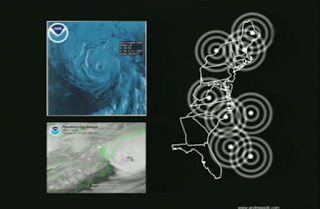The feature film "Hukkle" is included in this directory because of its extensive soundscape composed of field recorded and composed sounds by Tamás Zányi. Hukkle is the first feature film by Hungarian filmmaker György Pálfi. Video Source: YouTube
"Tamás Zányi, born in 1967, is a sound recordist/ editor/ mixer/ designer based in Budapest, Hungary. He started his professional life as a music teacher and later graduated in 1999 from the Hungarian Academy of Drama and Film in sound engineering. First a sound mixer on Hungarian shorts and features, such as György Pálfi’s Hukkle (2001) and Benedek Fliegauf’s Forest (2002), he quickly moved on to become one of the most renowned sound designers in the region."
The film is (almost) without narrative and every sound is an element in the unfolding story that takes place in an ordinary Hungarian village. According to Wikipedia, the film "…begins with an old man who has hiccups, and takes place in front of his house near a can of milk. He observes the daily habits of the villagers, and the viewer is shown many sequences about different events: A young man drives his horse and cart filled with milk cans. Normally he would clean the cans, but he's distracted by a girl sitting in the sun. A threshing-machine is harvesting. A cat becomes poisoned and eventually dies. A mole gets killed by an old lady ploughing the ground and she gives the mole to her dog. A farmer takes his pig to a sow for fertilization and the two owners watch with satisfaction when the pigs copulate. The men of the village bowl to kill time. The old man is still having hiccups."
"The village seems idyllic, but there are mysterious things happening. During these events, there are sequences about women trading bottles with unknown liquids. From time to time a man dies and the collective village walks up with a chest and comforts the widow. The mailman also shows up after every death and gives the widow a small package in return for her signature. It all seems harmless and normal life continues after the burials. When a fisherman disappears, a local policeman is determined to find out what happened to the fisherman and eventually finds out at the end when he sees the mailman appear with a package for the widow." Text Source: Wikipedia and other online resource.
Hukkle (74:38)






























